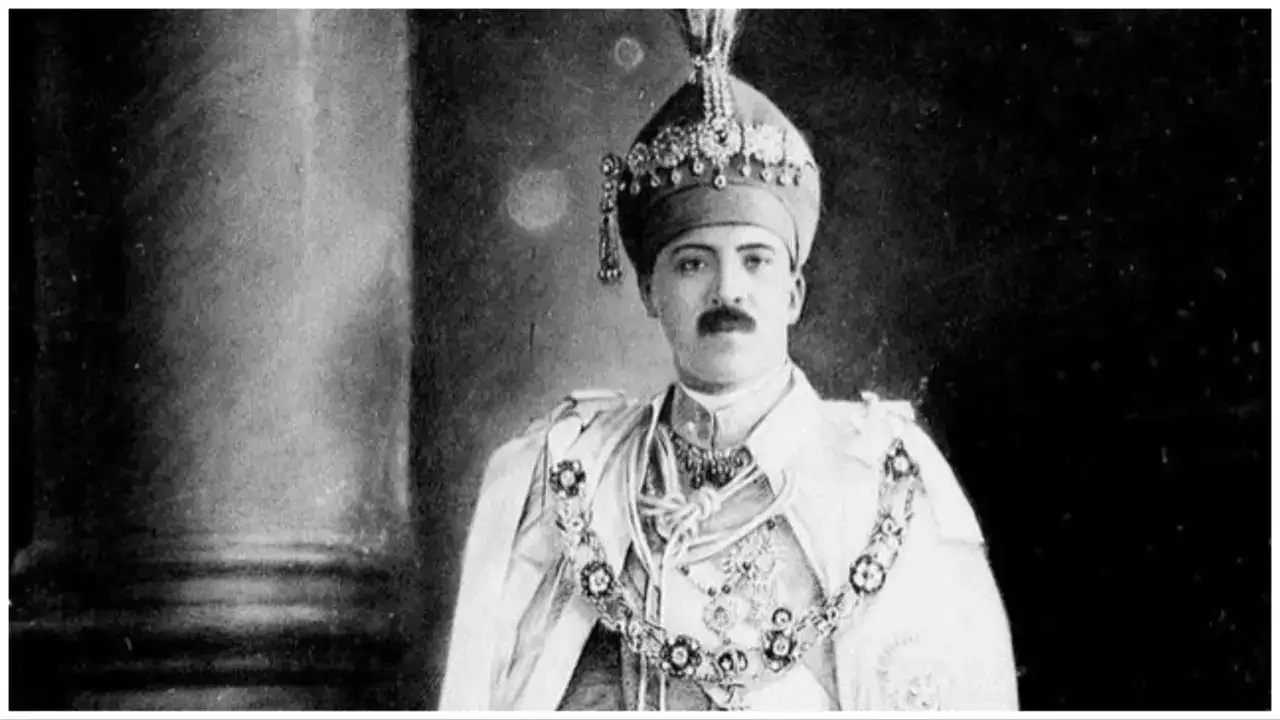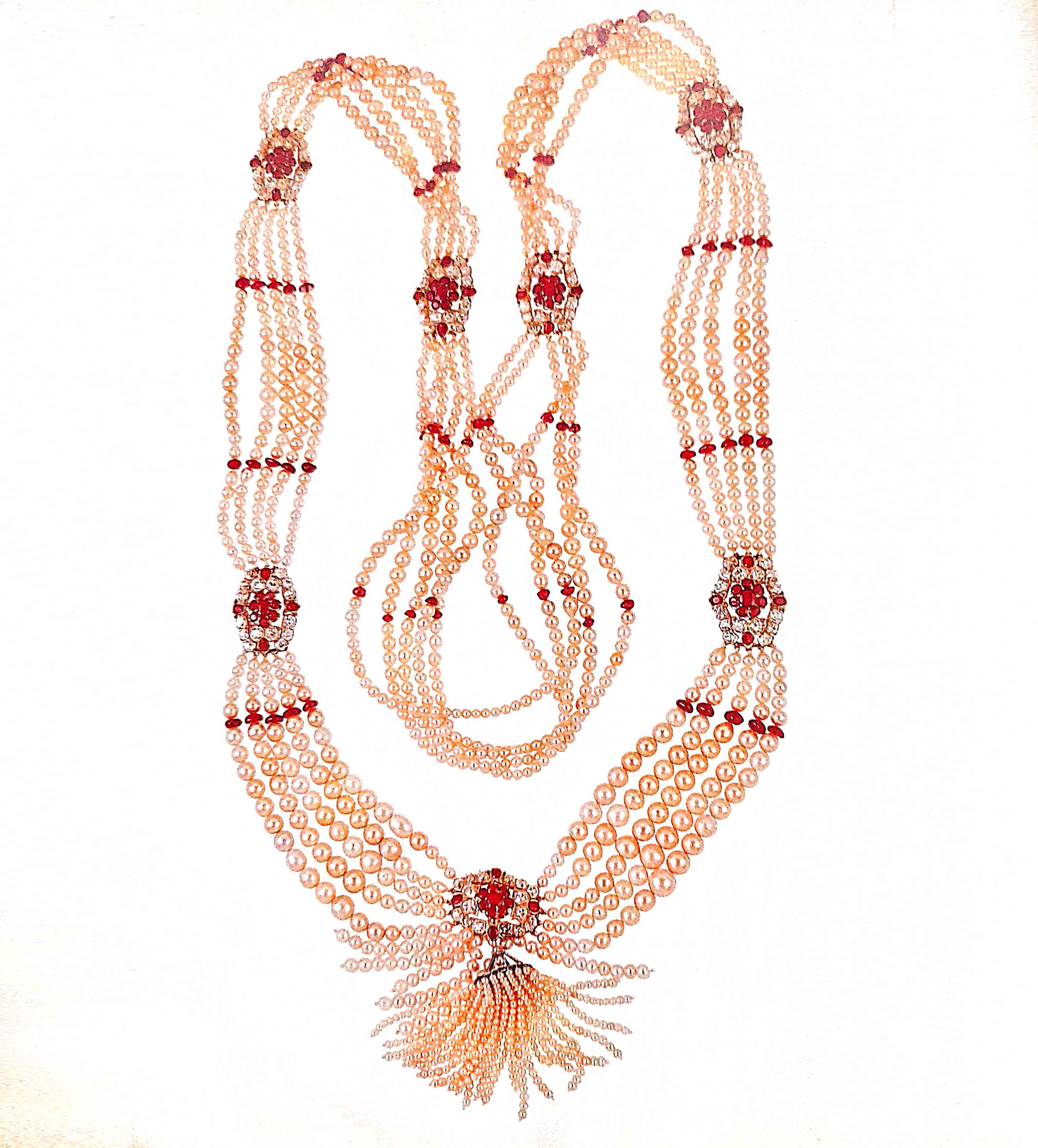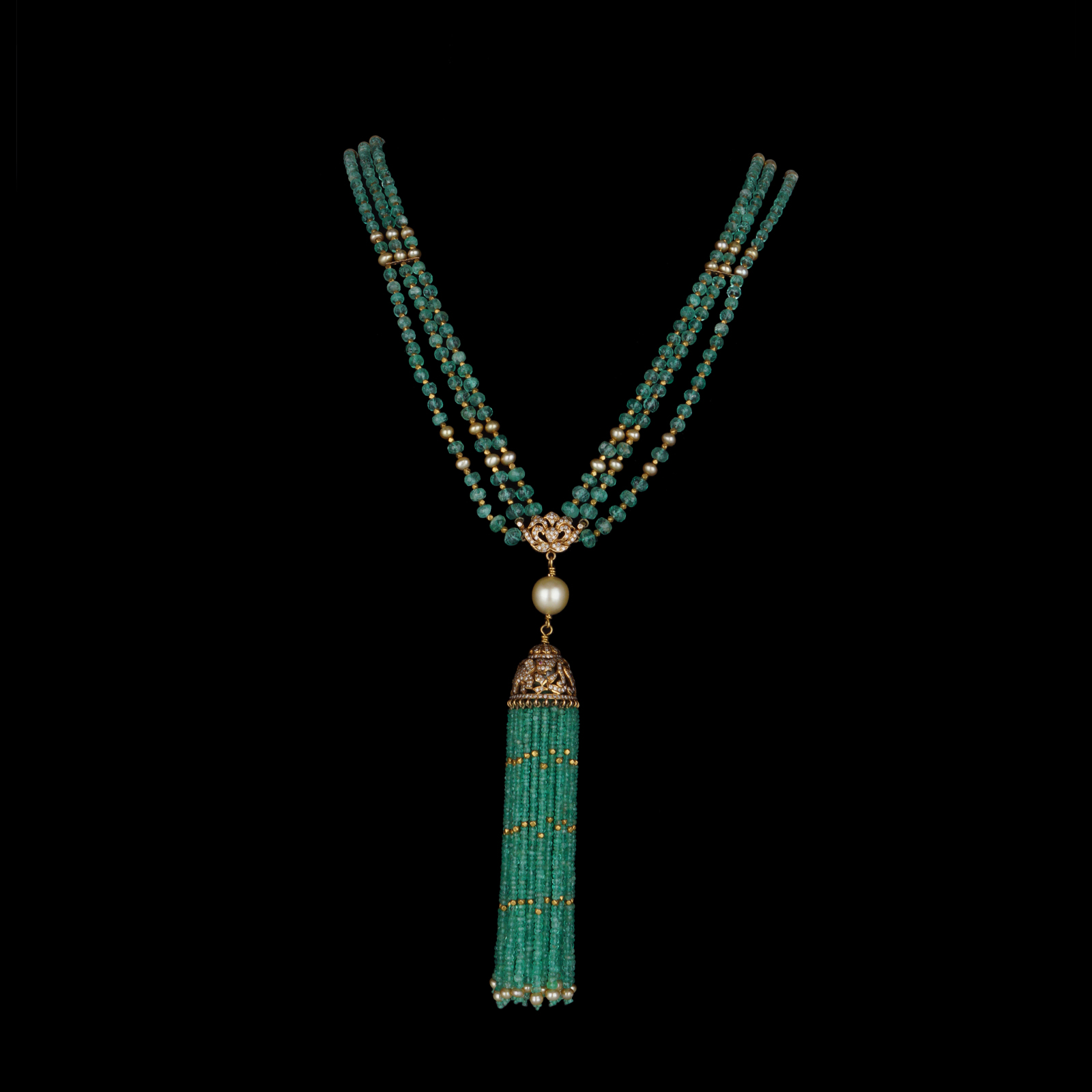
The Nizams had a passion for pearls and precious stones. Loose pearls, spinel beads and emerald beads were not only set into ornaments but used for a variety of purposes - sewn on to coats, sarees, caps and prayer rugs; set into the handles of daggers, swords and sheaths; and used to decorate boxes and other functional accoutrements. They are among the jewels included by Mir Osman Ali Khan in the Fifth Schedule of the Nizam's Jewellery Trust.

There is one such jewellery piece which catches the eyes of any jewellery connoisseur. This jewel piece is named as the “Saheli Moti Panch Larhi”.
This alluring necklace comprises seven hexagonal panels (tukdi) with rubies and diamonds in an open-work setting, the centre-piece with a tassel of pearls suspended on five rows (larhi) of pearls with ruby bead spacers. The design and setting of the panels are relatively modern, the 84 rubies and 112 diamonds set a jour in open-back claw settings. The rubies appear to be of Burmese origin, although in this period gems from Thailand. However, the form of the necklace is typically Hyderabadi, designed to simulate a garland of flowers. The pearls are graded between each panel from large ones in the centre tapering to smaller ones on both sides.
Long garland necklaces, such as this one, inspired European designers and jewellers like Cartier and Chaumet, who replicated and adapted them to Western jewellery.
In the early 19 century, sautoirs - some of them coming down to the hips - became fashionable in Europe. These long necklaces were set with spectacular precious gems or were in the form of mulitple rows of pearls with tassel pendants surmounted with diamonds and carved emeralds.

Kalasha Jewellery – K-GP-1143
This long beaded necklace is inspired from the Saheli Moti Panch Larhi. The gold balls placement is done in the place of the tukdis to highlight the emerald beads. The necklace is accentuated with a tassel-like pendant. This necklace is a perfect piece for those who wants to carry only-single piece.
